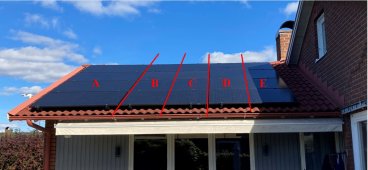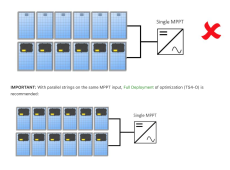Hello Hakan Thn,
my thoughts: Yes you are correct this does not appear right. It fits exactly with my own and Mark Cavanagh's findings. What should happen is that the currents in the two strings are similar - in principle - all the time. If the optimisers would work, the current produced by the panels in full sunshine would be passed on to the sting input of the inverter while the voltage and current (Power (W) = Voltage (V) x Current (I)) of the panels in partial or full shade providing less power is converted into a lower voltage but a current that matches the other panels. The correct effect of an Optimiser would be to maximise the current bringing it to the level of the other sunny panels. This would stop the shaded panels from impeding the energy for the sunny panels to be utilised while adding perhaps a little energy to the total still. Like Mark Cavanagh, I believe the problem to be enormous and Tigo maintains the confusion while profiting, not unlike Big Tobacco.
my thoughts: Yes you are correct this does not appear right. It fits exactly with my own and Mark Cavanagh's findings. What should happen is that the currents in the two strings are similar - in principle - all the time. If the optimisers would work, the current produced by the panels in full sunshine would be passed on to the sting input of the inverter while the voltage and current (Power (W) = Voltage (V) x Current (I)) of the panels in partial or full shade providing less power is converted into a lower voltage but a current that matches the other panels. The correct effect of an Optimiser would be to maximise the current bringing it to the level of the other sunny panels. This would stop the shaded panels from impeding the energy for the sunny panels to be utilised while adding perhaps a little energy to the total still. Like Mark Cavanagh, I believe the problem to be enormous and Tigo maintains the confusion while profiting, not unlike Big Tobacco.




